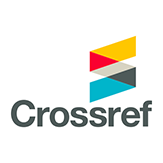Evaluasi Dampak Program Keluarga Harapan Terhadap Pemanfaatan Fasilitas Pelayanan Kesehatan untuk Layanan Persalinan di Indonesia (Analisis Data SUSENAS tahun 2018)
Abstract
Keywords
References
Baba-Ari, F., Eboreime, E. A. and Hossain, M. (2018) ‘Conditional cash transfers for maternal health interventions: Factors influencing uptake in North-Central Nigeria’, International Journal of Health Policy and Management, 7(10), pp. 934–942. doi: 10.15171/ijhpm.2018.56.
Badan Pusat Statistik (2015) Rata rata banyaknya anggota rumah tangga menurut provinsi di Indonesia. Jakarta. http://www.bps.go.id (diakses : 17 februari 2020).
Badan Pusat Statistik (2018) Indeks Pembangunan Manusia dan Gini Ratio di Indonesia. Jakarta. http://www.bps.go.id (diakses : 17 februari 2020).
Badan Pusat Statistik (2018a) Profil kemiskinan di Indonesia Maret 2018. Jakarta. Indonesia
Caliendo M, Kopeinig S (2008). Some Practical guidane for the implementation of propensity score matching. J Econ Surv. 2008;22(1):31–72. https ://doi.org/10.111 1/j.1467-6419.2007.00527.x.
Chaudhury, N., Friedman, J., Onishi, J.,( 2013). Philippines conditional Cash Transfer Program: Impact Evaluation 2012.
Garrido, M. M. et al. (2014) ‘Methods for constructing and assessing propensity scores’, Health Services Research, 49(5), pp. 1701–1720. doi: 10.1111/14756773.12182.
Gertler, P. (2004). ‘Do conditional cash transfers improve child health? Evidence from PROGRESA’s control randomized experiment’, American Economic Review, 94 (2): 336–341
Grépin, K. A., Habyarimana, J. and Jack, W. (2019) ‘Cash on delivery: Results of a randomized experiment to promote maternal health care in Kenya’, Journal of Health Economics. Elsevier B.V., 65, pp. 15–30. doi:10.1016/j.jhealeco.2018.12.001.
Hendarwan H, Lestary H, Kawan-kawan (2015). Laporan Kajian Sistem Rujukan Maternal dan Neonatal di Provinsi papua, Maluku, NTB, dan Kalimantan Tengah. Jakarta; 2015.
Hidayat, B. (2010) ‘Mengenal Rancang Bangun Program Keluarga Harapan Kesehatan’, Kesmas: National Public Health Journal, 4(6), p. 243. doi:10.21109/kesmas.v4i6.162.
Kemenkes RI (2018) ‘Hasil Utama Riskesdas 2018’.
Kementerian Sosial RI (2018) ‘PERATURAN MENTERI SOSIAL REPUBLIK INDONESIA NOMOR 1 TAHUN 2018 TENTANG PROGRAM KELUARGA HARAPAN’, PKH, (187).
Kementrian Kesehatan RI (2019) ‘PERATURAN MENTERI KESEHATAN REPUBLIK INDONESIA NOMOR 4 TAHUN 2019 TENTANG STANDAR TEKNIS PEMENUHAN MUTU PELAYANAN DASAR PADA STANDAR PELAYANAN MINIMAL BIDANG KESEHATAN’, SPM, 4(1), pp. 75–84. doi: .1037//0033-2909.I26.1.78.
Kementrian kesehatan RI (2019a) Profil Kesehatan Indonesia 2018 [Indonesia Health Profile 2018]. Available at: http://www.depkes.go.id/resources/downl oad/pusdatin/profil-kesehatanindonesia/Data-dan-Informasi_ProfilKesehatan-Indonesia-2018.pdf.
Kusuma, D. et al. (2016) ‘Can cash transfers improve determinants of maternal mortality? Evidence from the household and community programs in Indonesia’, Social Science and Medicine. Elsevier Ltd, 163, pp. 10–20. doi:10.1016/j.socscimed.2016.06.020.
Nurasih, N. and Nurrochmi, E. (2017) ‘Analisis Alasan Memilih Bersalin Di Rumah Di Wilayah Kerja Puskesmas Sitopeng Kota Cirebon Tahun 2016’, Care : Jurnal Ilmiah Ilmu Kesehatan, 5(3), p. 345. doi: 10.33366/cr.v5i3.703.
Oduenyi, C., Ordu, V. and Okoli, U. (2019) ‘Assessing the operational effectiveness of a maternal and child health (MCH) conditional cash transfer pilot programme in Nigeria’, BMC Pregnancy and Childbirth. BMC Pregnancy and Childbirth, 19(1), pp. 1–12. doi: 10.1186/s12884-019-2418-0.
Prihatin, T., Rahfiludin, M. and Winarni, S. (2017) ‘Analisis Faktor-Faktor yang Berhubungan dengan Pemilihan Tempat Persalinan Tahun 2016 (Studi di Wilayah Puskesmas Perawatan Suban Kabupaten Tanjung Jabung Barat)’, Jurnal Kesehatan Masyarakat (e-Journal), 5(3), pp. 218–225.
Rahman, M. M. and Pallikadavath, S. (2018) ‘How much do conditional cash transfers increase the utilization of maternal and child health care services? New evidence from Janani Suraksha Yojana in India’, Economics and Human Biology. Elsevier B.V., 31, pp. 164–183. doi: 10.1016/j.ehb.2018.08.007.
Rosenbaum, P. R., and D. R. Rubin. (1984). “Reducing Bias in Observational Studies Using Subclassification on the Propensity Score.” Journal of the American Statistical Association 79 (387): 516–24.
SDKI (2017) Badan Kependudukan dan Keluarga Berencana Nasional, Badan Pusat Statistik, & Kementerian Kesehatan Indonesia.
Tim Nasional Percepatan Penanggulangan Kemiskinan (TNP2K) (2017) ‘Basis Data Terpadu 2015: Untuk Memilah Penerima Manfaat Program Penanganan Fakir Miskin Berdasarkan Kriteria Program’, (I), pp. 1–97.
Togiaratua Nainggolan dan Badrun Susantyo (2017). Upaya Percepatan Penanggulangan Kemiskinan Melalui Pogram Keluarga Harapan Studi Di Empat Daerah Di Indonesia. Pusat Penelitian dan Pengembangan Kesejahteraan Sosial, Kementerian Sosial RI
DOI: 10.7454/eki.v5i1.3898
Refbacks
- There are currently no refbacks.








